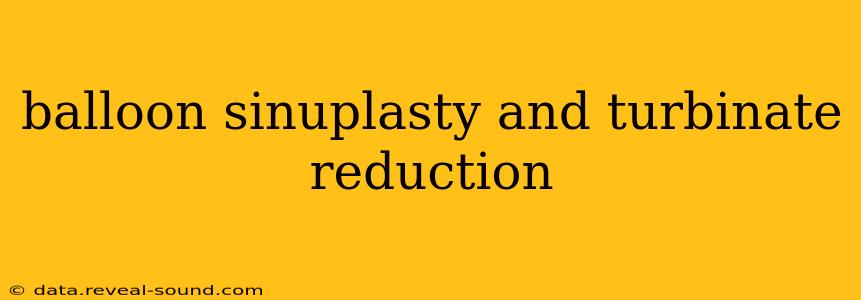Chronic sinusitis can significantly impact your quality of life, causing persistent headaches, facial pain, and difficulty breathing. Traditional sinus surgery often involves extensive incisions and longer recovery times. However, minimally invasive procedures like balloon sinuplasty and turbinate reduction offer effective alternatives with faster healing and less discomfort. This comprehensive guide explores both procedures, their benefits, risks, and recovery process.
What is Balloon Sinuplasty?
Balloon sinuplasty is a minimally invasive procedure used to treat chronic sinusitis. It involves inserting a small balloon catheter into the blocked sinus passage. The balloon is then inflated to widen the opening, allowing for better drainage and improved airflow. This procedure helps restore natural sinus drainage without the need for extensive incisions or removal of sinus tissue.
How does Balloon Sinuplasty Work?
The procedure typically involves the following steps:
- Numbing: Local anesthesia is used to numb the nasal passages.
- Catheter Insertion: A thin catheter is inserted through the nostril into the blocked sinus.
- Balloon Inflation: A small balloon at the catheter's tip is inflated, gently widening the sinus opening.
- Balloon Deflation & Removal: Once the opening is widened, the balloon is deflated and removed.
- Drainage: The widened sinus passage allows for better drainage and airflow.
Is Balloon Sinuplasty Right for Me?
Balloon sinuplasty is a suitable option for many individuals with chronic sinusitis, particularly those who haven't found relief with medical management. Your doctor will assess your specific condition and determine if this procedure is appropriate for you.
What is Turbinate Reduction?
Turbinates are bony structures located in your nasal passages that help filter and warm the air you breathe. Enlarged or swollen turbinates can obstruct airflow, leading to nasal congestion and breathing difficulties. Turbinate reduction aims to decrease the size of the turbinates, improving nasal breathing. This procedure can be performed in conjunction with balloon sinuplasty or as a standalone treatment.
Different Methods of Turbinate Reduction
Several techniques can be employed for turbinate reduction, including:
- Radiofrequency ablation: This uses radio waves to shrink the turbinates.
- Surgical resection: This involves removing a portion of the turbinate tissue.
- Submucosal resection: This involves removing tissue from beneath the turbinate mucosa.
- Laser turbinoplasty: This uses laser energy to reduce the size of the turbinates.
The choice of technique depends on several factors, including the severity of the turbinate enlargement and your individual needs.
Balloon Sinuplasty and Turbinate Reduction: Combined Procedure
Often, balloon sinuplasty is performed in conjunction with turbinate reduction, offering a comprehensive approach to addressing nasal congestion and sinus problems. The combination can provide synergistic benefits, leading to improved outcomes and reduced recovery time.
What are the advantages of combining both procedures?
Combining both procedures can address multiple contributing factors to nasal congestion and sinusitis simultaneously. This can lead to more significant improvement in symptoms compared to treating each issue individually. It often results in a more complete resolution of breathing problems and improved sinus drainage.
What are the potential risks and complications of Balloon Sinuplasty and Turbinate Reduction?
As with any surgical procedure, there are potential risks and complications associated with balloon sinuplasty and turbinate reduction. These can include:
- Bleeding: Some bleeding is common, but excessive bleeding can occur.
- Infection: There's a risk of infection at the surgical site.
- Pain: Discomfort is typically minimal but can vary between individuals.
- Dryness: Reduced nasal moisture can occur after the procedure.
- Crusting: Crusting in the nasal passages is a possible side effect.
It is crucial to discuss these potential risks with your doctor before undergoing the procedure to make an informed decision.
How long is the recovery time for Balloon Sinuplasty and Turbinate Reduction?
Recovery time varies depending on the extent of the procedure and individual healing rates. Generally, patients experience minimal discomfort and can return to their daily activities within a few days. However, complete healing may take several weeks. Your doctor will provide specific recovery instructions and follow-up appointments.
What is the cost of Balloon Sinuplasty and Turbinate Reduction?
The cost of balloon sinuplasty and turbinate reduction can vary depending on several factors, including your location, the surgeon's fees, and the specific procedures performed. It's essential to discuss the cost with your doctor or insurance provider before undergoing the procedure.
This information is intended for educational purposes only and should not be considered medical advice. Always consult with a healthcare professional for diagnosis and treatment of any medical condition.
